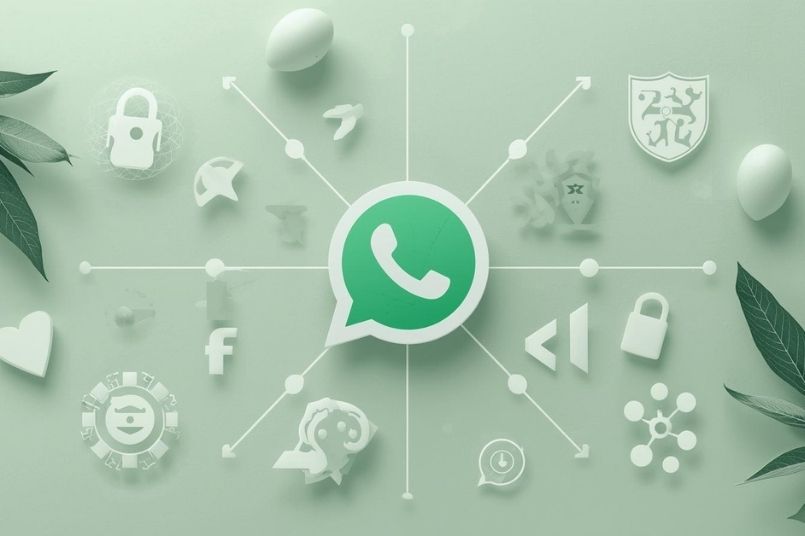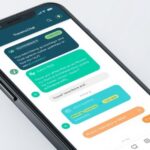HIPAA-Aware Messaging on WhatsApp: Practical Safeguards

Healthcare organizations across the United States choose WhatsApp as their primary communication platform because patients already use it for messaging and it provides fast communication. The system faces an obvious conflict because patient experience requires easy access but compliance needs strict adherence to rules. The solution requires organizations to create HIPAA-compliant workflows that protect PHI data on WhatsApp through operational use and secure handoffs and PHI exchanges should move to protected systems with audit trails and access controls. This method enables fast communication through messaging while maintaining privacy protection and risk management for institutions.
The first step in creating HIPAA-compliant design involves implementing consent architecture. Patients need to actively choose to receive messages through WhatsApp by reading specific language which explains what types of information will be transmitted and what will not be shared. Healthcare clinics can use WhatsApp to send appointment confirmations and preparation checklists and check-in links and parking instructions and satisfaction surveys because these messages enhance patient access and follow-up without revealing medical information. The system should document patient requests for WhatsApp PHI access despite warning messages while implementing appropriate security measures before directing them to a secure portal link or protected form for completing the exchange. The system enables patients to maintain control while implementing necessary safety measures.
The foundation of secure workflows depends on PHI minimization practices. Messages should use generic encounter references while avoiding free text that lacks control and never combine full identifiers with clinical information. The system uses tokens and short-lived links which direct users to authenticated sessions that enforce role-based access controls and logging and retention rules. A quick acknowledgment should be sent to patients who ask clinical questions through the thread before using a one-tap deep link to move them to a secure channel which preserves their context while keeping their sensitive data out of personal messaging apps. The approach minimizes data exposure points while maintaining fast response times.
The most successful operational use cases follow a common pattern which begins with WhatsApp outreach to initiate action before transferring users to a protected endpoint. The pre-visit readiness process includes sending reminders about time and location and fast check-in procedures and insurance information with a secure intake form link. The procedure preparation system sends patients timing alerts and fasting reminders and navigation assistance while keeping medication information accessible through authentication. The post-visit process allows patients to give feedback and receive general care advice and access their discharge instructions through a sign-in link. The single-tap responses in chronic care programs enable patients to check in for adherence while protected flows become accessible for detailed information collection. The system design enables fast access while eliminating phone tag while maintaining complete privacy protection.
The organization needs to establish specific measurable security protocols for its operations. WhatsApp functions as an engagement tool which should not be treated as a PHI system for storing records. The storage of sensitive information should be avoided within messaging threads because EHR/CRM systems with encryption at rest and audit logs and defined retention periods should maintain all records. The system should allow only authorized personnel to send messages through role-based access controls and it must enforce template standards and message frequency limits and quiet time restrictions. Staff members need training about proper WhatsApp conduct because they should respond with empathy before moving the conversation to a secure platform instead of providing clinical advice through the messaging app. The established norms help organizations minimize unintended disclosure incidents while maintaining uniform practices between different teams.
The implementation of proper governance systems and vendor management practices remains essential. Organizations must verify their messaging platform partner’s readiness to implement HIPAA-eligible architecture solutions when needed and determine their contractual obligations regarding support. The practice of avoiding ePHI placement in WhatsApp content must continue while using secure links for all sensitive information. Legal and compliance teams should review message templates every quarter to ensure consent language matches current policy while staff members receive training to follow correct escalation procedures. The incident response plan must include procedures for handling misdirected messages and patient PHI along with specific steps for remediation and patient notification protocols.
Patient experience leaders who implement HIPAA-compliant messaging methods achieve better results through reduced no-shows and efficient front-office operations and happy patients who receive proper information and support. The process of sending reminders and rescheduling appointments becomes simple which helps maintain stable appointment numbers. The process of care transitions becomes less complicated when patients receive clear information about parking and arrival times and preparation requirements through their primary device. The health system’s fast and uniform response times lead to higher patient satisfaction even though detailed information exists in a secure portal. Compliance leaders achieve better confidence through system-based PHI protection which prevents unmanaged thread exposure and maintains sensitive actions within secure administrative systems that fulfill physical and technical safeguard requirements.
The program needs tracking of essential metrics to achieve sustainability. The system should track patient opt-in numbers along with their source locations and appointment show rates and late cancellation events before and after message delivery and secure link conversion rates and the percentage of conversations that successfully move to protected channels. The system should track patient-initiated PHI volume in WhatsApp along with secure-channel transition response times and all cases that need incident handling procedures. The system should evolve its templates and routing algorithms through performance data analysis while adding new operational use cases that prove to enhance operations without compromising privacy standards.
The organization should explain its approach to patients through direct communication. The first message should contain a short statement which explains that the organization uses WhatsApp to send helpful reminders and links yet medical information goes through a secure portal for privacy protection. The direct communication helps patients understand the process better while building trust within the healthcare system. Healthcare organizations in the USA can implement responsible patient engagement through WhatsApp by following a system that includes clear consent protocols and minimal PHI sharing and secure data transfers and ongoing governance practices.
FAQs
Is WhatsApp itself HIPAA compliant?
No. WhatsApp should not be treated as a HIPAA-compliant repository for PHI; use it for operational nudges and route PHI to secure, authenticated systems with audit trails.
Can patients request WhatsApp for sensitive information?
Patients can request it, but the safer pattern is to acknowledge in WhatsApp and link them into a secure portal or protected form, documenting their preference and your advisories.
What messages are safest to send?
Send appointment confirmations, directions, prep checklists, parking info, rescheduling links, and satisfaction surveys. Keep clinical specifics and identifiers out of the thread.
How do we handle patient clinical questions in WhatsApp?
Respond quickly and empathetically, then transition to a secure channel via a one-tap deep link; complete the discussion behind authentication and record it in the EHR.






Review HIPAA-Aware Messaging on WhatsApp: Practical Safeguards.